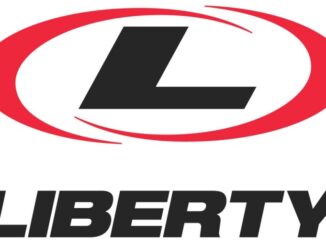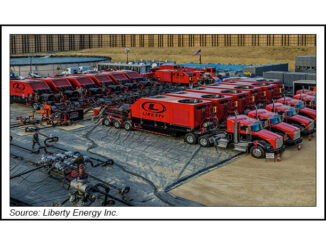
Like E&Ps, oilfield services companies are prioritizing cash generation and distributions to shareholders which could be a constraint on the industry’s growth.
Supply chain problems are a common issue across the industry. New Wood Mackenzie research shows that the average cost of drilling and completing a well in the US Lower 48 states rose by a staggering 34% last year, as prices for diesel, proppant, and steel pipe hit record highs.
This year we expect that cost inflation will slow to around 10%. Diesel and proppant prices have been coming down. But the costs of drilling rigs and frac spreads — the pressure pumps used for hydraulic fracturing — are still rising.
Capacity utilization rates for frac spreads and super spec high-quality rigs are running high. And the companies that provide drilling and fracking services are wary of adding additional capacity. The exploration and production companies have focused on strengthening their balance sheets and returning capital to
shareholders, and — helped by the rebound in oil prices — have been rewarded with a 108% rise in the S&P 500 energy index in the past two years, far outpacing the 8% rise in the broader index.
Oilfield service companies are pursuing the same strategy of capital discipline. And industry that has been often brutally cyclical is aiming for greater stability and better performance for investors,
“E&Ps are getting some real encouragement from investors for this disciplined model, and so we have seen the service providers also consolidate… and they are being very disciplined.”
“They are aiming to make sure that if there’s a bankruptcy headline, it’s not their company. So, everybody is working very diligently on their balance sheets, to make sure that they can persevere and live through the cycles,” Rick Muncrief, chief executive of Devon Energy, said.
Woodmac noted that capital discipline and returning cash to shareholders have been consistent themes in recent earnings reports from the listed oilfield services companies. Halliburton, for example, raised its quarterly dividend to 16 cents for the fourth quarter of 2022, up from 12 cents for the third quarter, and has resumed its share buyback program.
In its earnings statement, Halliburton highlighted its operating margin of 17.5% in the fourth quarter, up 4.6 percentage points year-over-year. Chief executive Jeff Miller said he aimed to position the company to outperform in any conditions, “but especially to maximize returns through this upcycle”.
SLB raised its quarterly dividend by 43% and resumed share buybacks. This year it expects to distribute more than 50% of free cash flow to shareholders in dividends and buybacks. It has also been strengthening its balance sheet: net debt at the end of 2022 was $9.3 billion, down $1.7 billion over the year. Olivier Le Peuch, chief executive, said he expected broad-based growth in activity this year, with “higher service pricing and tighter service sector capacity”.
The message from Baker Hughes is similar. In 2022 the company increased its dividend for the first time since 2017. Reporting fourth-quarter earnings, chief executive Lorenzo Simonelli said the company planned to distribute 60-80% of its free cash flow to investors through dividends and buybacks.
Liberty, a US company that provides hydraulic fracturing and other services, has emphasized the opportunities in “today’s tight frac market”. It is shifting its fleets over from diesel fuel to natural gas, which means lower costs and lower emissions, but is making the transition “at a measured pace, roughly aligned with the attrition of the industry’s older generation diesel frac capacity.” For the coming year and beyond, it predicted “demand for Liberty services far beyond our capacity to supply.”
SLB and Halliburton shares had a turbulent week as crude prices slumped but are still roughly double their level of two years ago. Baker Hughes is up about 40% and Liberty 20% over the same period.
For oil and gas operators, however, the oilfield services industry’s preference for capital discipline and cash distributions over investing for growth is potentially worrying. Services capacity in key markets, including North America, is a limiter on the pace of growth in oil and gas production. If equipment is run harder, breakdowns and disruption can become more frequent. Wood Mackenzie analysts emphasize the importance of operators securing the right kit and teams for their projects. Execution risk has the potential to be a more serious problem than cost inflation.
At the same time, if tight markets for oilfield services do continue to drive up operators’ costs, as we expect, then their margins could come under pressure. If the world economy remains robust and oil and gas demand continues to grow, then healthy commodity prices could allow both operators and services companies alike to achieve their goals for earnings, cash generation and distributions to shareholders. If there is an economic downturn, perhaps triggered by continued interest rate increases from central banks, then the rising tide that has lifted all boats in the past two years could swiftly recede.
Both operators and oilfield services companies will be better placed to face the next downturn because they have strengthened their balance sheets during the good times. But Andrew Thorburn, Wood Mackenzie’s global head of cost analysis, warns that the services companies could still face difficult times if they try to fight for market share in a downturn.
“Current behavior is quite impressive in that the arms race of previous cycles has been controlled,” he says. “But I get the feeling that it only takes one move for this to kick off.”



